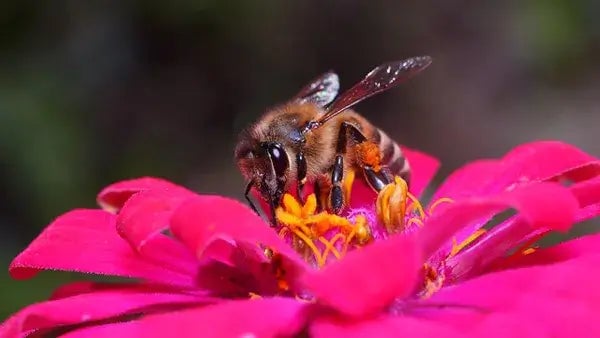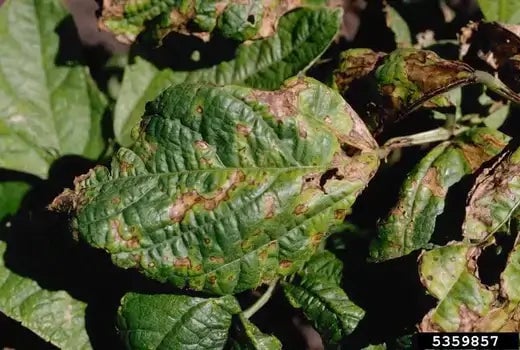A beautiful garden is something every homeowner wants, and to have a beautiful garden; you have to ensure that the plants are healthy
Unhealthy or diseased plants can ruin the garden and spread diseases to other plants in the surrounding area. It is crucial to know about the common plant diseases so that you can identify them on time and take the necessary steps accordingly—
Tomato and Apple Blights:
To prevent tomatoes and apple blight from affecting the plant, you can use copper or sulfur sprays which help the plant fight against fungal disease & stop from further growth of fungus. In this disease, the plant leaves turn yellow and expose the fruit to sunscald.
General Fungal Diseases:
You can consider corn and garlic spray to prevent your plants from widespread fungal infections. You can prepare at home by taking a handful of corn and outer leaves of garlic and mixing them in a blender. After waiting for an hour or two, strain it and use the liquid as a spray. It helps a lot in preventing fungal disease.
Bacterial and Fungal Diseases:
To protect your plants against bacterial and fungal diseases, you may consider using Hydrogen Peroxide with an undiluted 3% solution. This spray can be purchased from the market and is recommended to be used in plants that are established, not in younger ones. Try testing it first in a portion of plant tissue. You can use it as a natural treatment if it works without any reaction. Hydrogen Peroxide is a preventative measure of bacterial and fungal diseases.
Virus Prevention:
Protecting your plants against virus infections can help in achieving proper growth. Antibiotics are recommended to prevent bacterial and viral infestations in plants. You can prepare this spray by mixing 8 ounces of skimmed milk, 1-gallon water, and ½ teaspoon of antitranspirants like Wiltpruf or Cloud cover. Skimmed milk helps plants to cope with calcium deficiency, and the spray would prevent bacterial diseases before it occurs.
These are a few measures taken to keep your plants healthy and protect them from the devastating effects of bacterial & fungal diseases.
You can also refer to many other options available in the market for the prevention of diseases. These measures have been tested and can be used to prevent plant disease. It is recommended to test a small portion of the plant you are about to work on and then use it as a direct measure. It is also advisable to buy the best quality plants that are disease resistant to ensure a healthy and thriving garden.
How to Plant a Disease-Free Garden: Best Practices
Home gardeners and hobbyists find the experience of planting a productive garden that stays disease-free incredibly rewarding. Gardens never achieve complete protection from pests and diseases, but proactive initial actions can significantly minimize these issues. Selecting suitable plant varieties, maintaining soil health, and adequately gardening create a robust environment that protects your plants during the growing season. These methods will help you establish a garden that effectively resists disease.
The first step to a successful garden is to pick a suitable location and soil conditions. Select a garden area with plenty of sunlight because most plants require six hours of light daily. Proper drainage in the soil is essential to prevent root rot and fungal infections that thrive in overly moist environments. Mixing organic materials like compost or mature manure into your garden soil enhances water movement and air circulation and increases nutrient levels. The foundation helps plants maintain their vitality, which reduces their chances of getting sick.
Choose seeds and seedlings that are high-quality and resistant to disease. Contemporary plant varieties have been genetically developed to show natural immunity against frequent garden diseases. The disease resistance codes on seed packets and plant labels show which plants can withstand threats like wilt, blight, rust, and other diseases. Selecting healthy transplants is equally crucial: Choose seedlings with strong stems and bright leaves that show no indication of discoloration or wilting. Seedlings displaying yellow or spotted leaves should be avoided because they may contain pathogens.
After acquiring your plants, apply correct spacing and organization throughout your garden space. Plants that grow too close together face more significant disease risks because the lack of airflow and excess humidity establish conditions favorable for fungi. Use the spacing directions on seed packets or plant tags to place your plants properly. Proper air circulation between plants causes leaf moisture to evaporate, which limits the transmission of spores and plant pathogens. Positioning taller crops to avoid shading shorter plants helps maintain better light exposure and reduces humidity near delicate leaves.
Establish an effective watering plan to prevent diseases from developing in your garden. Waterlogged soil from overwatering creates an environment that attracts harmful fungi and bacteria. If feasible, water plants should be directly at their base instead of from above. This method helps to keep plant foliage dry and reduces the chances of developing leaf spot diseases and mildew, as well as other pathogens that thrive in moist conditions. Morning watering gives plants time to dry during sunlight hours, which helps prevent diseases from spreading.
Rotating crops is an effective method of stopping pathogens from accumulating in the garden. Planting members of the same plant family repetitively in the same location leads to increased build-up of pathogens and pests. Moving planting locations yearly breaks pest and pathogen life cycles, which allows for garden renewal every season. A garden journal that records crop locations and disease patterns enables more effective planning for crop rotation.
Finally, maintain overall garden hygiene. Eliminate any dead or diseased plant matter immediately because they create a habitat for pathogens that can infect healthy plants. Either compost garden debris properly when you know the pile reaches sufficient temperatures to destroy pathogens or dispose of it elsewhere. Check your plants consistently for early disease symptoms and promptly treat any problems using organic or chemical remedies when required.
Implementing site selection strategies, healthy seedlings, adequate spacing, proper watering, crop rotation, and garden cleanliness will establish the basis for a garden that produces abundantly and remains mostly disease-free. When you provide consistent attention and proper care, your plants will flourish in a healthy setting, giving you stunning flowers, tasty harvests, and contentment from maintaining a strong garden ecosystem.
Read more

Shrubs make perfect additions to borders near walkways or around a home's foundation. This text focuses on shrubs, with the burning bush being one of the most spectacular options to have in any yard.

A perennial plant, simply known as a perennial, has a lifespan longer than two years. The term is most often used to differentiate between plants that have shorter life spans, which are called annu...


